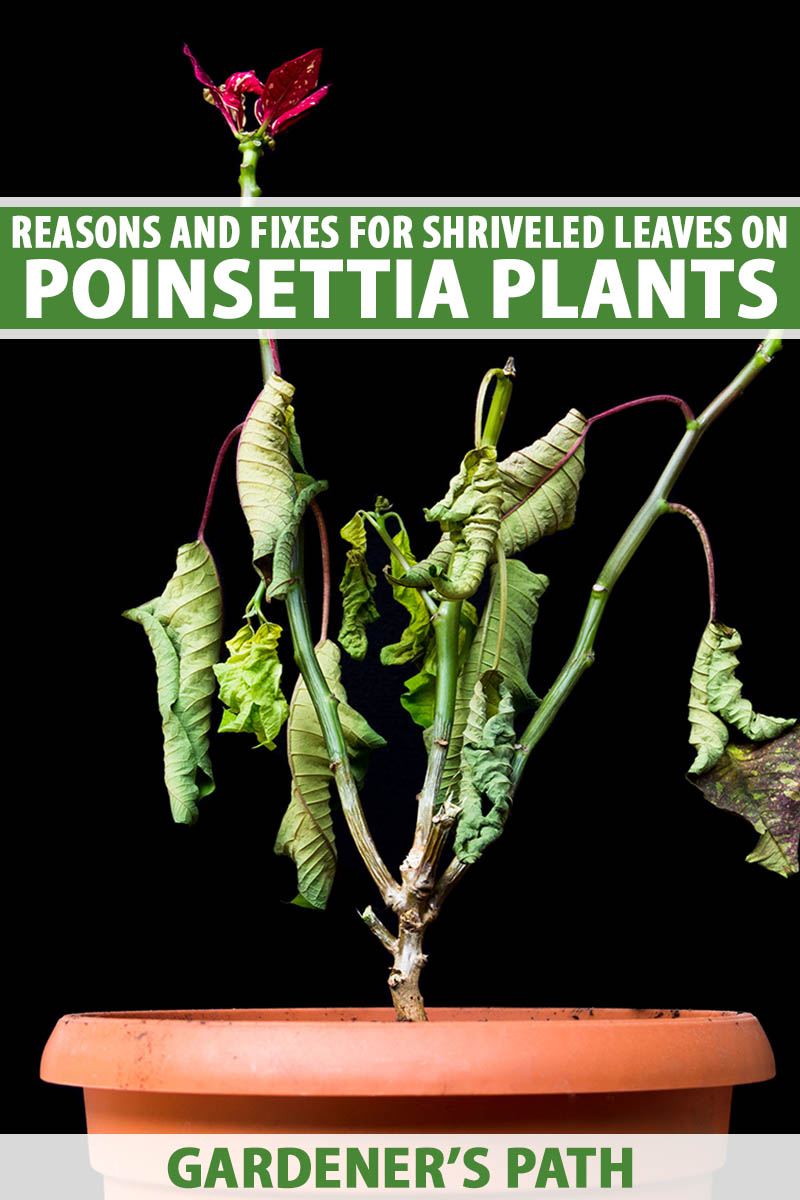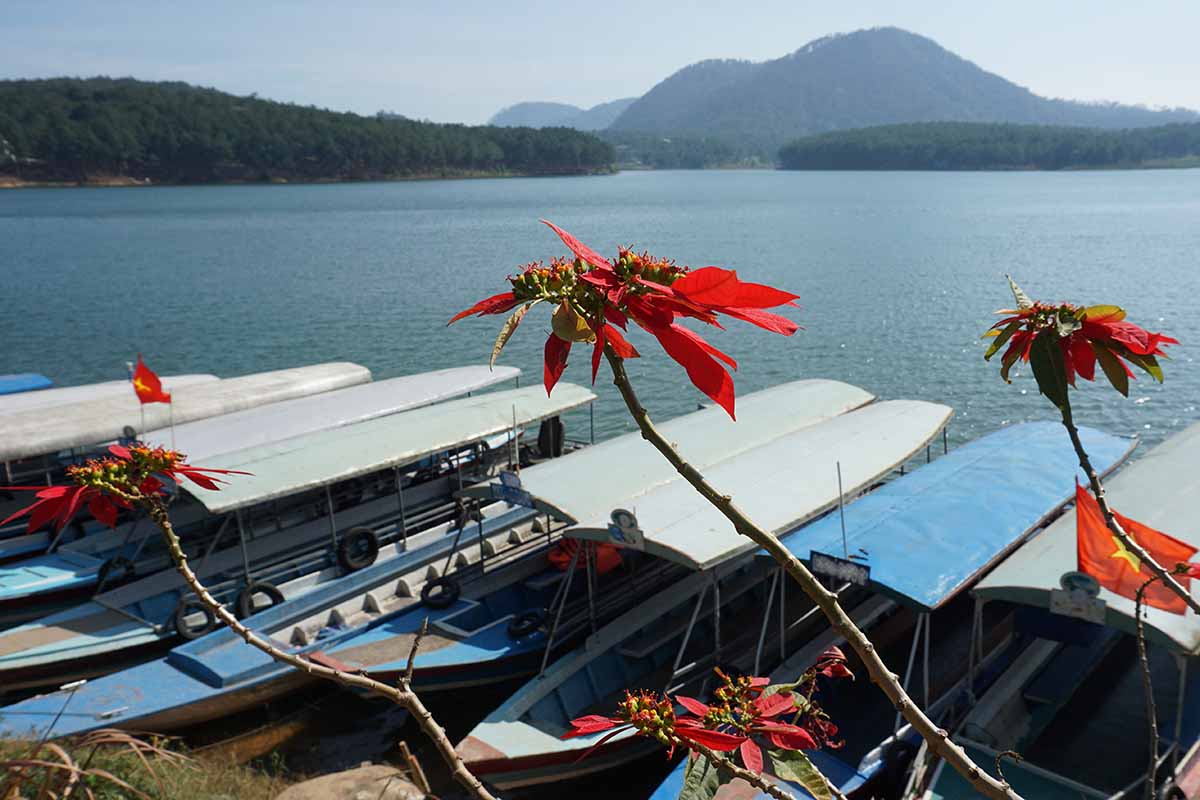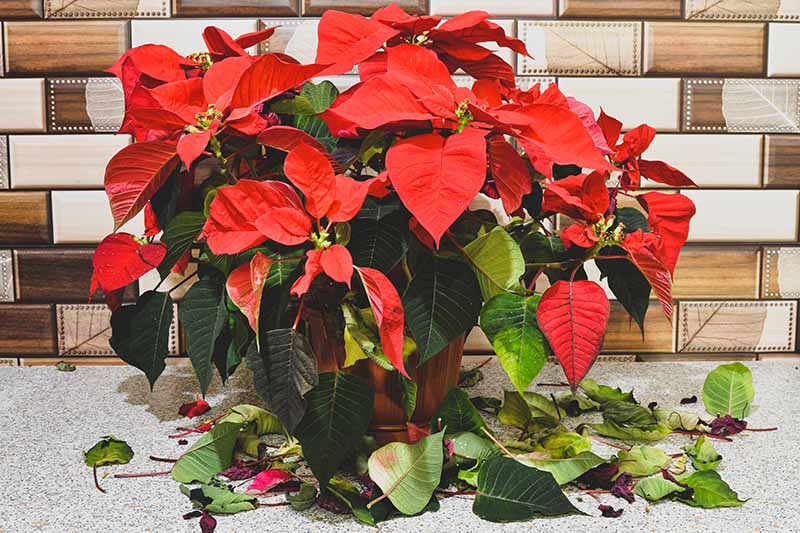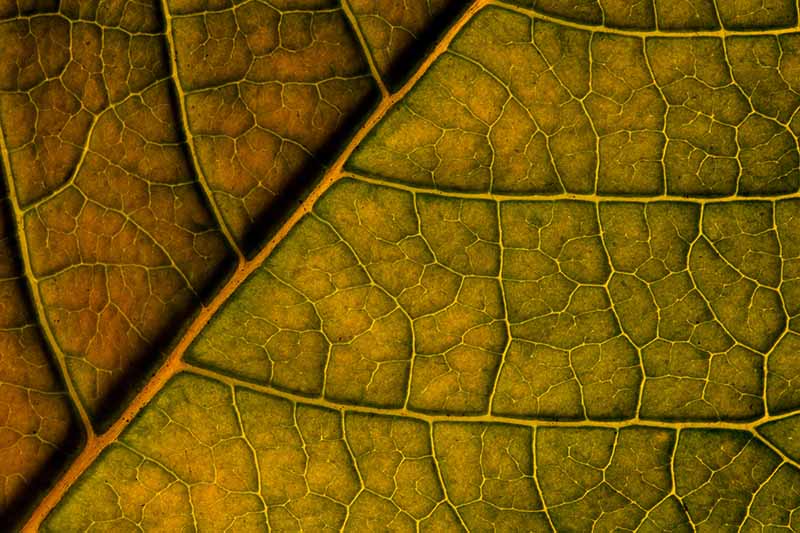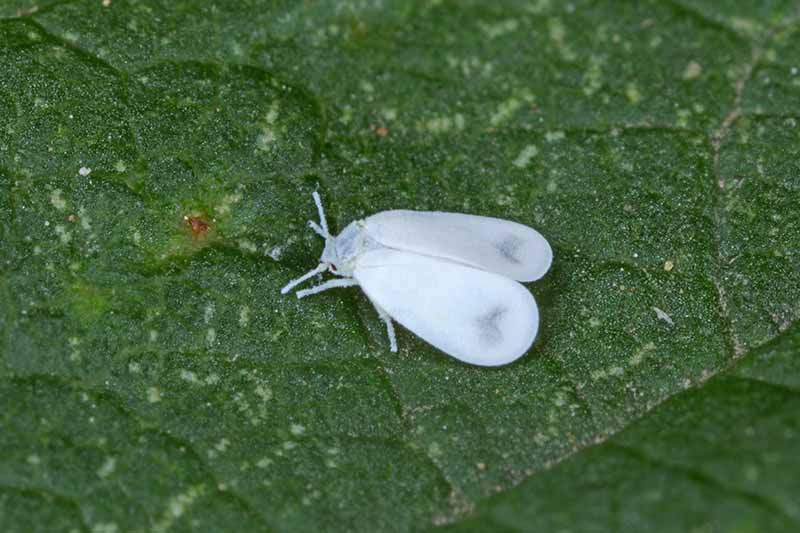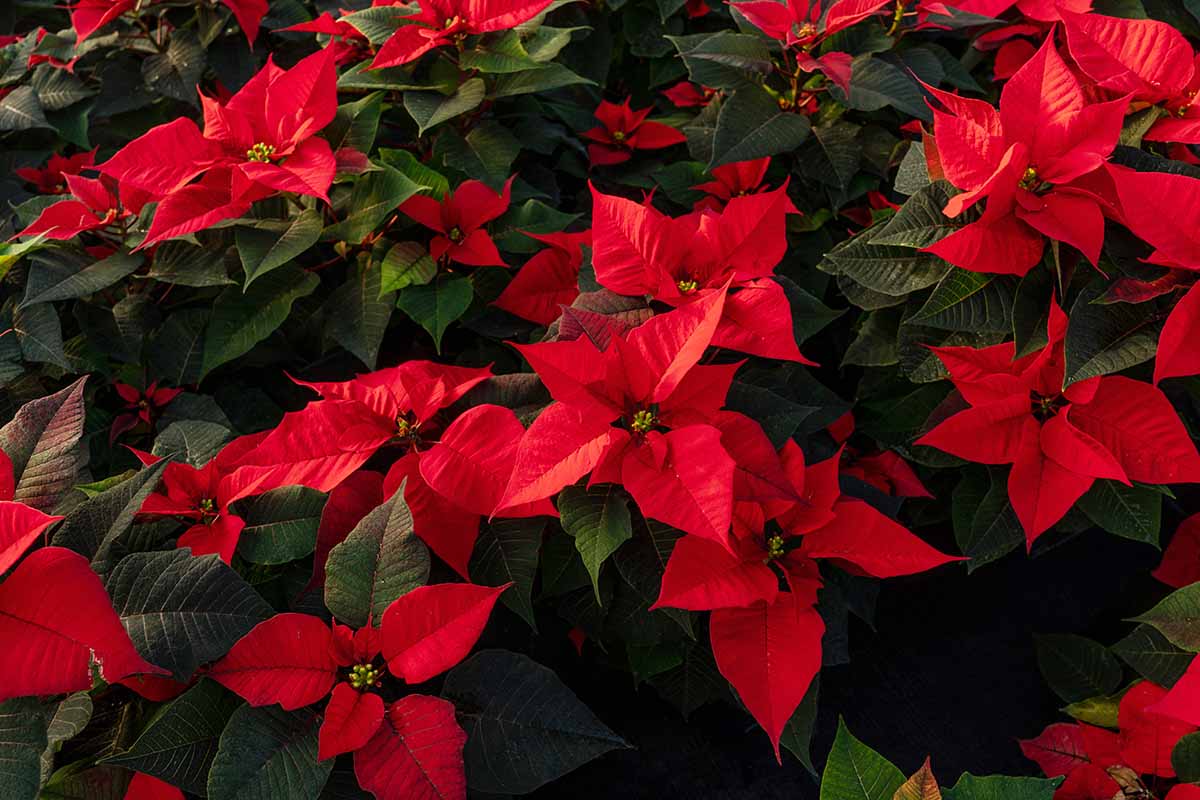Talented singers exercise their vocal cords, pro athletes work with nutritionists and physical trainers, and poinsettias aren’t really so different. In the plant world, poinsettias grown for profit need their leaves to be at peak levels of health and appearance – otherwise, they’ll be unmarketable. We link to vendors to help you find relevant products. If you buy from one of our links, we may earn a commission. Regardless, shriveled-up leaves are not what you want. Without attractive foliage, all a poinsettia has left is its tiny, inconspicuous flowers… which don’t exactly bring home the bacon, aesthetics-wise. Therefore, knowing what exactly can cause the leaves of a Euphorbia pulcherrima to shrivel up is super important. Equally important is knowing how to fix the problem, and more crucial still, how to prevent it from happening in the first place. This guide covers all of that and more. By the time you finish reading, you’ll know exactly how to keep poinsettias lush, vibrant, and healthy. Not looking like the ghost of Christmas plants past. Before we begin, this is worth noting: one of the best preemptive measures you can take is simply growing your E. pulcherrima properly from the get-go. An ounce of prevention is worth a pound of cure, after all. For a helpful refresher, check out our in-depth poinsettia growing guide. Now, let’s dive in and nip this problem in the bud!
1. Environmental Extremes
Hailing from Guatemala and Mexico, the poinsettia is hardy to USDA Zones 9 to 11. It’s happiest in a moderate temperature range of 65 to 70°F during the day and 60 to 65°F at night. As such, this plant isn’t the biggest fan of the heat, cold, or rapid temperature swings between the two. Stressful temperatures too far above 70°F distort the foliage and shorten the plant’s lifespan, while conditions below 50°F will cause the leaves to shrivel before dropping off entirely. And temperature extremes aren’t all you have to watch out for – dry indoor heat in the winter or windy outdoor garden conditions can deprive an E. pulcherrima of the humidity it needs, which often leads to dried up foliage. Harsh, sunscalding-ly intense light and full shade exposures can also cause this plant’s greenery to wither. Here’s the solution to all of the above: provide your poinsettias with an environment that’s as close to optimal as possible. If you’re growing your poinsettias outdoors full time, make sure their growing site is in full to partial sun, kept protected from wind, and in USDA Hardiness Zones 9 to 11. For plants grown outdoors in Zone 8 or anywhere colder, bring the plant indoors when temperatures dip below 50°F. In a pinch, thermal blankets can also offer a bit of protection from surprise bouts of cold for outdoor plantings. Any specimens grown as houseplants should be kept in a temperature-controlled area between 60 and 70°F, in a spot that’s indirectly lit and free of drafts.
2. Improper Irrigation
Remember the tale of Goldilocks and the Three Bears? Other than “don’t nap while breaking and entering,” the moral of the story is “not too much, not too little, but just right.” Makes for tasty porridge and for well-watered poinsettias. Too little water will desiccate the leaves, while too much will oversaturate the roots and lead to rot as well as problems above the soil line, such as stunted growth and shriveled foliage. It’s easy to water incorrectly… so, how much irrigation should we provide? Throughout the growing season, strive to keep the soil moist at all times by watering whenever the surface feels dry to the touch. During dormancy, start off by watering once every two weeks. If the plant is drying out, then it’s a sign that you should increase the frequency of supplemental irrigation. Make sure the container itself has a drainage hole or holes for excess water to drain. But be warned: many poinsettia containers come wrapped in pretty foil or decorative plastic, which can trap excess water. This can be fixed by punching some holes in the bottom of the foil, or simply by removing it altogether either permanently or just when you irrigate.
3. Inadequate Growing Media
Even if you have your irrigation down, it’s still possible for the soil to become waterlogged due to improper soil. A medium that’s void of organic matter or predominantly made up of clay holds onto water for prolonged periods of time, which can suffocate the roots. And no oxygen to the roots results in no support for the leaves, which can lead to foliar shriveling. It’s also important to note that an E. pulcherrima prefers a soil pH of 5.8 to 6.2, and while it can tolerate soil that’s a bit above or below these values going too far into alkaline or or acidic territory renders key nutrients unavailable for the plant – another potential cause of shriveled-up leaves. While it’s unlikely that you’ll be planting potted specimens in clay, it’s also a relief to know that most pre-mixed potting soil generally falls comfortably within this range. You may wish to create your own soilless mix that’s free-flowing. A 50/50 mix of peat moss and perlite is perfect for providing excellent drainage. But even the perfect soil can become compacted over time, and plants that need but haven’t received a repotting can end up sitting in waterlogged soil. The solution to this is simple: repot your poinsettias into the next-size pot whenever they become root bound.
4. Malnutrition
A plant without access to the nutrients that it needs can develop symptoms in its leaves such as chlorosis, necrosis, and overall stunted growth. A lack of certain nutrients such as calcium can leave a poinsettia’s foliage shriveled as an initial symptom, but all varieties of nutrient deficiency can tax a plant in such a way that this physiological stress eventually leads to withered and dead foliage. It’s best to treat every potential nutrient deficiency as a direct threat to E. pulcherrima leaves.
5. Pests and Disease
Whether it’s a creepy-crawly bug or a wriggling bacterium, hostile forces can attack an E. pulcherrima and deprive the foliage of its health and ornamental awesomeness. Preventatively, applying a complete fertilizer should cover your poinsettia’s nutritional bases. Container-grown plants in soilless media should be fertilized every three weeks during periods of active growth with a balanced houseplant fertilizer. Jack’s Classic Fertilizer But be warned: applying too much fertilizer can lead to fertilizer burn. The salts in excessive doses of fertilizer draw moisture away from the plant, which leads to symptoms such as leaf browning, leaf scorch, defoliation, and overall impaired growth. Avoid this by applying any fertilizers according to the provided instructions. And many of these problems can cause foliar wilt or shriveling in some form. Notable poinsettia pests include whiteflies, thrips, fungus gnats, spider mites, aphids, mealybugs, and poinsettia hornworms. Soilborne fungi and water molds, such as species of Rhizoctonia, Pythium, and Thielaviopsis can cause a handful of root and stem rots in these plants, while conditions such as gray mold, powdery mildew, and scab can also be problematic. Proper cultivation should help to prevent many of these issues, along with being careful to select pest- and disease-free poinsettia plantings from the nursery. Disease and infestation are less likely overall indoors, as long as you use clean, sanitized tools and containers, and plant in sterile soil. Avoid overwatering or under-watering, ensure good drainage, and be sure to check plants for signs of pests or disease before you bring them in for the winter if they’ve vacationed outdoors in the summertime. You can read more about managing pests and disease in poinsettias in our general growing guide. Hopefully, this guide has given you some ideas on what to keep an eye out for, and how to prevent problems from cropping up in the future. For fans of data and logging, keeping a gardening journal of all your horticultural habits can be helpful for documenting what may be the cause of a plant problem such as withered leaves, and how you dealt with it. The comments section below is the perfect place for any questions, personal anecdotes, or remarks you have about withered E. pulcherrima leaves. We love hearing from you! Can’t get enough of these plants? Then have fun pondering these poinsettia particulars next:
Are Poinsettia Plants Poisonous?How to Care for Poinsettias After the HolidaysHow to Propagate Poinsettia Plants from Cuttings
